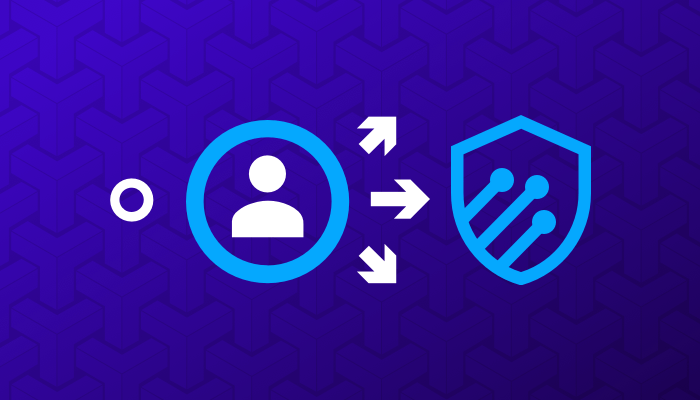How IAM Solution Helps to Overcome IT Security Challenges?
The increase in cloud adoption and widening data flow across networks pose security challenges to the organization’s overall infrastructure.
Therefore, the need for a proper and robust Identity and Access Management (IAM) strategy has become important to secure the IT resources of an organization.
Now, let’s discuss how an IAM solves IT security challenges.
Why Do We Need IAM Solution?
Since organizations and modern industries are shifting their data storage from traditional systems to cloud-driven architecture, the distributed mobile and remote workforce is also becoming common.
This complex and ever-changing architecture demands a robust IAM solution to protect the organization resources from the latest threats and modern cyber warfare.
List of IT Security Challenges That IAM Solves:
Challenge #1: Distributed Application:
The growing demand for Software-as-a-Service (SaaS) and cloud-based applications has brought forward the concept of the distributed application.
End users can simply register themselves and use those apps or use collaborative tools from anywhere, at any time.
Thus, IT admins struggle to manage these end-user identities.
Solution:
For solving the challenge of a distributed application & its authentication, organizations can incorporate a holistic IAM solution.
Through IAM, IT admins can connect, manage, simplify, and monitor access privileges accordingly.
Challenge #2: Resource Provisioning & De-provisioning:
Handling the organization’s resource provisioning and de-provisioning manually is challenging.
Often it becomes a tedious task for IT admins to set various rights and authorities for new employees.
It also takes unnecessary time & effort for users or employees to gain access to the required apps and resources.
Allotting resource manually impacts productivity & safety (due to human error).
Therefore, to minimize the security threats & risks, organizations should come up with an alternative and automated means to provision & de-provision in less time with more accuracy & trust.
Solution:
By implementing a robust IAM, IT admins do not have to manually provision and de-provision organization resources.
Thus, it will also empower the IT admins to gain complete control over user/employee accessibility and fastens the enforcement of strong access control policies by avoiding human errors.
Challenge #3: Bring Your Own Device (BYOD) Becomes a Challenge:
Although BYOD practices are flexible and cost-efficient for employees to work seamlessly on their own devices, it becomes hard to provide robust security.
It is because different personal devices leverage various apps and operating systems to access corporate resources.
The risk factor skyrockets when these BYOD users access internal data or SaaS apps, especially on mobile devices.
Through BYOD, attackers can easily damage your organization’s data.
Solution:
Having a reliable IAM tool with robust security features provides seamless access management & prevents the use of other apps that are not related to business.
This also allows organizations to assign custom accessibility aligning with corporate business guidelines.
IAM is capable enough to address the various challenges that different technology stacks, operating systems, and architectures can pose to the corporate ecosystem.
Challenge #4: Traditional Passwords With Growing Tech Services:
As more and more tech-oriented services and platforms are growing by leveraging the cloud, it becomes tough to remember multiple passwords or undergo the implementation of numerous authentication protocols in web apps and network services.
Again, the IT department stumbles to balance work productivity and time in managing “password lost” tickets.
Solution:
IAM solutions come with different authentication mechanisms beyond passwords.
Some passwordless authentication techniques are Single Sign On (SSO), biometric authentication, authentication through magic links, hardware-based authentication, etc.
This enhances authentication security by incorporating risk-based authentication (RBA) or adaptive authentication, wherein the IAM solution takes additional parameters such as geolocation, IP address, browsers used, etc., to determine whether the legitimate person is using the system or not.
Challenge #5: Poor Management of Roles & Privileges:
With traditional security solutions, it becomes challenging to determine the resource authentication and authorization.
Poor role configuration can pose a threat to corporate resources.
Anyone with unnecessary permissions can exceed exploring resources, which they don’t need to know.
Thus, to solve such a challenge, organizations need an all-in-one solution wherein the IT admins can implement the practice of least privileges, separation of duties through constraints, and zero trust security principles.
Further, data/system owners had to monitor the organization network & systems to look for unusual behavior or permissions creep.
Solution:
IAM solution makes it easy to assign business roles to employees provided by human resource databases.
IAMs can automatically determine the various corporate resources the employee can access.
If an employee role changes, the IAM system can automatically withdraw previous permissions & assign new ones associated with the new role.
With these roles, IT admins can assign specific privileges to organization resources and can monitor them clearly, once the employee’s work becomes fully functional.
Challenge #6: Regulatory Compliance:
Sticking to compliance and government regulations becomes a challenge.
It is because these compliance and regulations change with time.
Not following proper rules and regulations can lead a business to face a lawsuit.
Thus, it becomes a burden for the IT security admins to keep their different security solutions aligned with compliance and government regulations.
Solution:
IAM is the best security tool that stays aligned with all the compliance & regulations like GDPR, HIPAA, COPPA, ISO/SEC 27001, etc.
IAMs come with automated audit reporting features, creating comprehensive analysis & simplifying various agreements to regulatory requirements.
Conclusion:
We hope this blog has given a crisp idea of how IAM solution helps to overcome IT security challenges, through automation and advanced features.
IAM is a comprehensive security framework that can solve different challenges that traditional security tools cannot address easily.
Secure your organization right now – Start 15 Days Free Trial

